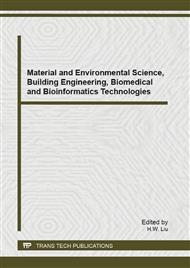p.112
p.116
p.120
p.125
p.129
p.133
p.138
p.142
p.146
Study on Causes and Solutions of Cracks on Concrete Hollow Block Wall
Abstract:
Concrete hollow block after being shaped up is possessed of features like strong shrinkage, poor thermal conductivity and repeated contraction after dampness, which leads to many problems in the use of concrete hollow block wall material. This article elaborates the causes of cracks on concrete hollow block wall from multiple perspectives, such as temperature expansion, air shrinkage, construction quality and design structure, and put forward solutions according to the causes from aspects of production, design, construction and technique improvement.
Info:
Periodical:
Pages:
129-132
Citation:
Online since:
September 2013
Authors:
Keywords:
Price:
Сopyright:
© 2013 Trans Tech Publications Ltd. All Rights Reserved
Share:
Citation:


